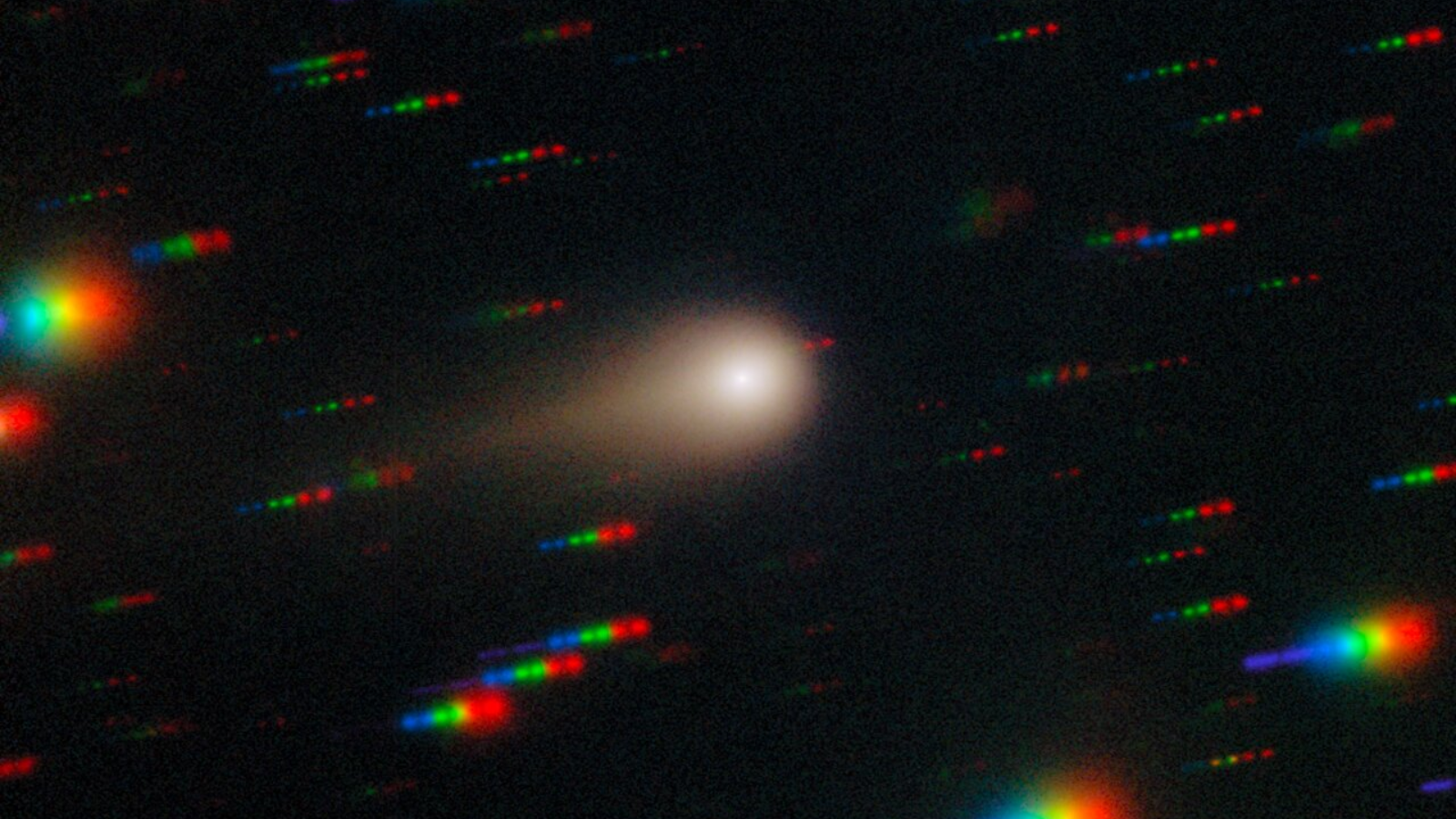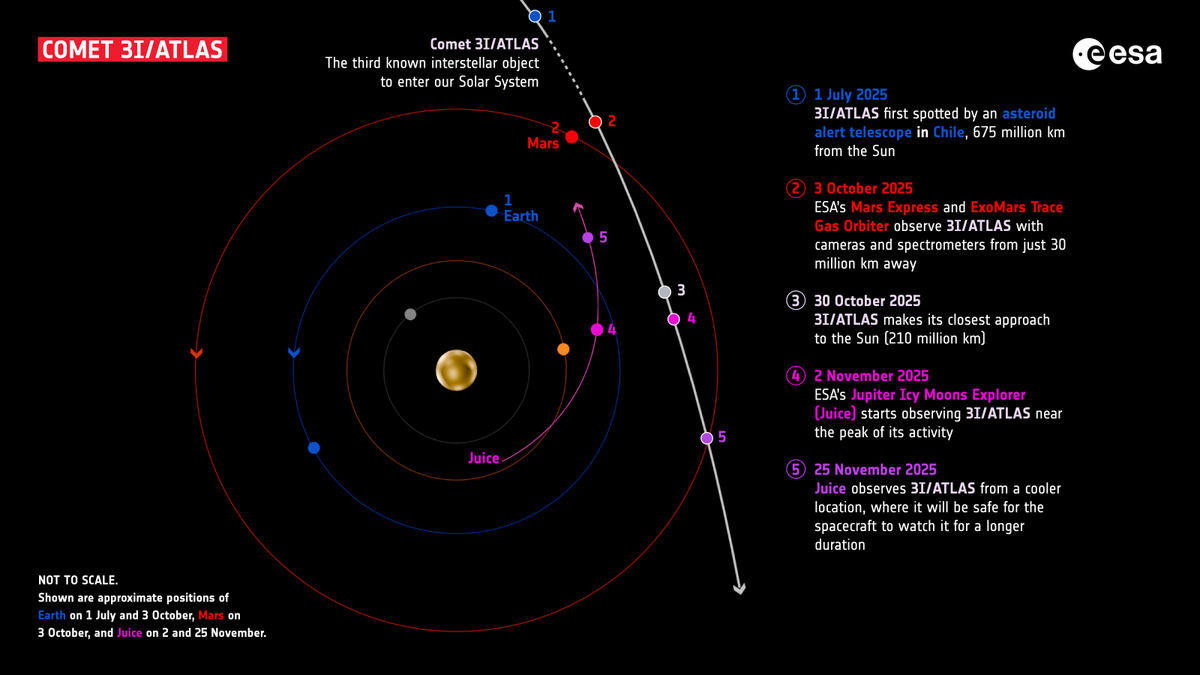☄️ Space missions repurposed to track the interstellar object 3I/ATLAS
Follow us on Google News (click on ☆)
First detected in July 2025 by the ATLAS telescope system in Chile, this comet is distinguished by its extrasolar origin, confirmed by its hyperbolic trajectory and impressive speed of 130,000 mph (210,000 km/h). Astronomers were able to observe it from Earth until September 2025, but its approach to the Sun made ground-based observations increasingly difficult. This brief window of Earth-based observation motivated space agencies to use their ongoing missions to continue studying this exceptional object.

Image of comet 3I/ATLAS captured by the Gemini South telescope
Credit: International Gemini Observatory/NOIRLab/NSF/AURA/Shadow the Scientist
The Mars missions of ESA and NASA are playing a crucial role in this space observation campaign. Between October 1st and 7th, 2025, the Mars Express and ExoMars Trace Gas Orbiter spacecraft monitored the comet's passage near Mars, with a minimum distance of 18.6 million miles (30 million kilometers) reached on October 3rd. NASA's Psyche mission, en route to the main asteroid belt between Mars and Jupiter, also contributed to this data collection from its privileged position in the inner Solar System.
ESA's JUICE (Jupiter Icy Moons Explorer) mission takes over between November 2nd and 25th, 2025, a crucial period corresponding to the comet's perihelion, its closest point to the Sun. This phase of maximum activity, where the ices of the cometary nucleus vaporize under solar radiation, allows for analysis of the object's complete chemical composition. JUICE's instruments will thus capture the emission of gases and dust forming the comet's bright coma and characteristic tail.
Analyzing this chemical signature offers perspectives for understanding the formation of planetary systems. If 3I/ATLAS's composition resembles that of comets in our Solar System, it could indicate similar formation processes across the galaxy. Conversely, marked differences would reveal exotic materials from another star system, enriching our knowledge of cosmic diversity.

Map showing the trajectory of interstellar comet 3I/ATLAS in our Solar System
Credit: ESA
These coordinated observations from space allow bypassing the limitations of ground-based telescopes and studying the comet during its most active phase. The data collected by the various space missions will thus provide the most detailed information ever obtained about an interstellar object.
Interstellar objects: messengers from other star systems
Interstellar objects like 3I/ATLAS are celestial bodies that are not gravitationally bound to a particular star and travel freely through interstellar space. Their detection remains rare because they cross our Solar System at high speed and are usually small in size.
These cosmic visitors can be comets, asteroids, or planetary fragments ejected from their original system during gravitational disturbances. Their study allows astronomers to directly analyze matter from other planetary systems without having to travel the immense distances that separate us from them.
The speed and trajectory of these objects are the main indicators of their interstellar origin. Unlike Solar System bodies that follow elliptical orbits around the Sun, interstellar objects exhibit hyperbolic trajectories that cause them to enter and exit our system without being captured.
Analysis of their chemical composition reveals valuable information about the formation conditions of planetary systems elsewhere in the galaxy, making each detection an exceptional scientific opportunity.